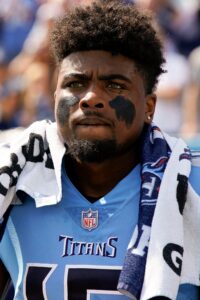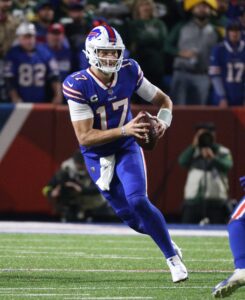The Bengals front office has been busy and will likely continue to be busy throughout the calendar year. Wide receiver Tee Higgins has now signed his franchise tender and an extension by the deadline of July 15 is not looking likely. While not ideal, this does allow for the front office to turn their attentions towards other matters. 
In addition to Higgins, seven other starters are entering contract-years: defensive tackle B.J. Hill, cornerback Mike Hilton, offensive tackle Trent Brown, tight end Mike Gesicki, safety Vonn Bell, long snapper Cal Adomitis, and kicker Evan McPherson. The team also has the extension of star wideout Ja’Marr Chase to concern themselves with. While Chase and some of the others may be a higher priority, McPherson may be the likeliest Bengal to receive the next new deal, according to Jay Morrison of Pro Football Network.
The reason McPherson is the likeliest candidate to next receive an extension is the precedents already in place. Morrison calls it “a textbook case of ‘when, not if.'” For one, the desire for an extension is mutual between McPherson and the team. Contracts for kickers are also extremely straightforward leading to the likelihood that any negotiations should be pretty cut-and-dry.
Long-term contracts for kickers range from three to five years. Only three players at the position, Harrison Butker (Chiefs), Jason Sanders (Dolphins), and Younghoe Koo (Falcons), are on five-year deals, and of the top 14 contracts in the league for kickers, only Graham Gano (Giants), Ka’imi Fairbairn (Texans), Chase McLaughlin (Buccaneers), and Dustin Hopkins (Browns) are inked for only three years. The other seven top contracts are all four-year contracts.
Those contracts also have a narrow range of value with the lowest annual average being $3MM (Hopkins) and the highest being $6MM, shared by Justin Tucker (Ravens) and Jake Elliott (Eagles). That leaves a pretty small range of options for the Bengals to find a deal for McPherson ranging from three to five years with an average annual value of $3MM to $6MM, unless the team is looking to make McPherson the highest-paid kicker in the NFL.
While McPherson has been impressive under his rookie deal in Cincinnati, the Florida-product is only the franchise’s third-most accurate kicker. The former Gator has an NFL field goal percentage of 83.9, converting 78 of his 93 attempts. He has missed six of 132 extra point attempts but showed improvement in that field last year, going 40 for 40 in 2023.
 In his first two seasons, McPherson also showed an impressive accuracy from deep, making 14 of 16 attempts from 50+ yards. That accuracy did not quite translate from inside the 40-yard line, though, as he missed seven of 20 attempts from 40-49 yards and even a 20-29 yarder over those first two years. He showed improvement on the latter front in 2023, going a perfect 19 for 19 on any field goals under 50 yards, but his long-distance accuracy suffered as he missed five of 12 attempts from over 50 yards last year.
In his first two seasons, McPherson also showed an impressive accuracy from deep, making 14 of 16 attempts from 50+ yards. That accuracy did not quite translate from inside the 40-yard line, though, as he missed seven of 20 attempts from 40-49 yards and even a 20-29 yarder over those first two years. He showed improvement on the latter front in 2023, going a perfect 19 for 19 on any field goals under 50 yards, but his long-distance accuracy suffered as he missed five of 12 attempts from over 50 yards last year.
Despite his inconsistencies, McPherson has still been one of the league’s better kickers over his three years in the NFL. If the Bengals intend to reward his early success by making him the highest-paid kicker in the league, McPherson should expect a four-year deal worth around $25MM or $26MM.
Alternatively, if Cincinnati decides that he may not be due the same money as Tucker or Elliott, the team may opt to instead reward McPherson with longevity, giving him less per year over a five-year deal. A five-year, $25MM offer would be the biggest contract for a kicker in total value and would give McPherson the eighth-highest annual average. The team could meet somewhere in the middle with a five-year, $27.5MM deal that would make McPherson the highest-paid kicker in the league with the fourth-highest annual average.
The biggest area for incentivizing a signing will be in the guarantees. Tucker leads the way in that category with $14MM of is four-year, $24MM deal being guaranteed at signing. The Bengals could give McPherson less money while still rewarding him with a high guaranteed amount, if that’s the route they choose.
However they go about keeping McPherson around, there won’t be too much room for negotiations. The three- to five-year deal averaging somewhere from $5MM to $7MM per year is expected to come sooner rather than later. The team has set the regular season as a de facto deadline for getting extensions done, per Morrison, and there is an expectation that, should McPherson reach a deal before that deadline, it would come shortly after the deadline to extend Higgins a month from today.




